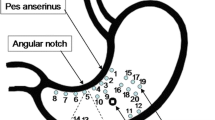Abstract
The effects of sham feeding on gastric motility of human subjects have not previously been studied. The amplitude of 3-cpm electrogastrogram (EGG) waves increases after the ingestion of food. We hypothesized that sham feeding would stimulate a similar, but briefer gastric myoelectric response. Healthy human subjects chewed and expectorated a hot dog on a roll and later ate a second hot dog. EGGs were continuously recorded before, during, and after sham feeding and eating. The results of experiment I (N=27) showed that the hand-scored amplitude of the 3-cpm waves increased significantly (P<0.01) during sham feeding. Two minutes after sham feeding, the mean amplitude of 3-cpm EGG waves returned to baseline level. The increase in EGG amplitude during eating was also significant (P<0.01), and remained increased for approximately 30 min after ingestion. The procedure used in experiment II (N=20) was similar to experiment I, but EGGs were computer analyzed and power, ie, spectral intensities, at 3 cpm were obtained. The increase in power at 3 cpm during sham feeding and during eating was significant (P< 0.05 and P<0.02, respectively). Similar to experiment I, the duration of increase in power at 3 cpm was brief during sham feeding compared to the postprandial increase. Four vagotimized subjects failed to show an increase in power at 3 cpm in response to sham feeding. We conclude: (1) The cephalic—vagal stimulation of sham feeding increases briefly the amplitude and power of 3-cpm gastric myoelectric activity in healthy subjects but not vagotomized patients. (2) The increase in postprandial 3-cpm amplitude is prolonged, reflecting initial cephalic-vagal activity and subsequent gastric stimulation by luminal contents.
Similar content being viewed by others
References
Giduck SA, Threatte RM, Kare MR: Cephalic reflexes: Their role in digestion and possible roles in absorption and metabolism. J Nutr 117:1191–1196, 1987
Wolf S, Wolff HG: Human Gastric Function. New York, Oxford University Press, 1943
Pavlov IP: Work of the Digestive Glands, 2nd ed. London, Charles Griffin, 1910
Feldman M, Richardson CT: Role of thought, sight, smell and taste of food in the cephalic phase of gastric acid secretion in humans. Gastroenterology 90:428–433, 1986
Moore JG, Schenkenberg T: Psychic control of gastric acid: Response to anticipated feeding and biofeedback training in man. Gastroenterology 66:954–959, 1974
Richardson CT, Walsh JH, Cooper KA, Feldman M, Fordtran JS: Studies on the role of cephalic-vagal stimulation in the acid secretory response to eating in normal human subjects. J Clin Invest 60:435–441, 1977
Feldman M, Richardson CT, Taylor IL, Walch JH: Effect of atropine on vagal release of gastrin and pancreatic polypeptide. J Clin Invest 63:294–298, 1979
Feldman M, Corbett DB, Ramsey EJ, Walch JH, Richardson CT: Abnormal gastric function in longstanding insulin-dependent diabetic patients. Gastroenterology 77:12–17, 1979
Lorber SH, Komarov SA, Shay H: Effect of sham feeding on gastric motor activity of the dog. Am J Physiol 162:441–451, 1950
Alvarez WC: An Introduction to Gastroenterology. London, Heineman, 1948
Davis RC, Garafolo L, Kveim K: Conditions associated with gastrointestinal activity. J Comp Physiol Psychol 52:466–475, 1959
Schiller, LR, Feldman M, Richardson CT: Effect of sham feeding on gastric emptying. Gastroenterology 78:1472–1475, 1980
Stern RM, Koch KL, Stewart WR, Vasey MW: Electrogastrography: Current issues in validation and methodology. Psychophysiology 24:55–64, 1987
Brown BH, Smallwood R, Duthie HL, Stoddard CJ: Intestinal smooth muscle electrical potentials recorded from surface electrodes. Med Biol Eng 13:97–103, 1975
Abell TL, Malagelada JR: Glucagon-evoked gastric dysrhythmias in humans shown by an improved electrogastrographic technique. Gastroenterology 88:1932–1940, 1985
Hamilton JW, Bellahsene B, Reichelderfer M, Webster JG, Bass P: Human electrogastrograms: Comparison of surface and mucosal recordings. Dig Dis Sci 31:33–39, 1986
Nelsen TS, Kohatsu S: Clinical electrogastrography and its relationship to gastric surgery. Am J Surg 116:215–222, 1968
Smout AJPM, van der Schee EJ, Grashuis JL: What is measured in electrogastrography? Dig Dis Sci 25:179–187, 1980
Koch KL, Stewart WR, Stern RM: Effect of barium meals on gastric electromechanical activity in man. A fluoroscopic-electrogastrographic study. Dig Dis Sci 32:1217–1222, 1987
Jones KR, Jones GE: Pre- and postprandial EGG variation.In Electrogastrography. RM Stern, KL Koch (eds). New York, Praeger, 1985, pp 168–181
Dixon WJ (ed): BMDP Statistical Software. Los Angeles, University of California Press, 1983
Schaap HM, Smout AJPM, Akkermans LMA: Myoelectrical activity of the Billroth II gastric remnant. Gastroenterology 94:A402, 1988
Nicolaidis S: Early systemic responses to orogastric stimulation in the regulation of food and water balance: Functional and electrophysiological data. Ann NY Acad Sci 157:1176–1203, 1969
Valenstein ES, Weber ML: Potentiation of insulin coma by saccharin. J Comp Physiol Psychol 60:443–446, 1965
Wyrwicka W: Conditioned behavioral analysis of feeding mechanisms.In Handbook of Physiology, Section 6, Vol 1. CF Code (ed). Washington, DC, American Physiology Society, 1967
Powley TL: The ventromedial hypothalamic syndrome, satiety, and a cephalic phase hypothesis. Psychol Rev 84:89–126, 1977
Janowitz HD, Hollander F, Orringer D, Levy MH, Winkelstein A, Kaufman MR, Margolin SG: A quantitative study of the gastric secretory response to sham feeding in a human subject. Gastroenterology 16:104–116, 1950
MacDonald I, Spurrell WR: “Sham feeding” with the pectin meal. J Physiol 119:256–265, 1953
Author information
Authors and Affiliations
Rights and permissions
About this article
Cite this article
Stern, R.M., Crawford, H.E., Stewart, W.R. et al. Sham feeding. Digest Dis Sci 34, 521–527 (1989). https://doi.org/10.1007/BF01536327
Received:
Revised:
Accepted:
Issue Date:
DOI: https://doi.org/10.1007/BF01536327




